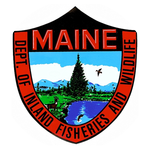Abstract
Freshwater snails play an important role in lake and river habitats. They are shelled mollusks that eat algae, and they are food for other wildlife such as fish and ducks. There are several freshwater snail species in Maine, but the Bigmouth Pond Snail (Stagnicola mighelsi) is unique to the state. Although Maine has more than 6,000 lakes and ponds, this snail is found in only a handful. We set out to see if we could find more Bigmouth Pondsnails, and to see if there is something unique about where they live, such as: what other snails are present; lake size and shoreline development; lake water chemistry; or other factors. In the summers of 2013 and 2014 we surveyed 17 lakes and ponds, and one big river segment, most of which had never been searched. We found the Bigmouth Pondsnail at one new waterbody, bringing the total number of lakes where it is found to five. The new find helps to support our understanding that the snails live in lakes that are big, with few buildings on the shoreline, relatively stable water levels, and large sandbars. We can use this knowledge to help conserve this snail and lake ecosystems in Maine.
Introduction
Freshwater snails are mollusks with a hard (calcium carbonate) shell that covers their soft body. When they are active, their muscular foot and head with tentacles are extended so they can travel and eat. Freshwater snails come in a variety of shapes and sizes, from just a few millimeters to more than 30mm long. Freshwater snails live in most aquatic habitats, where they eat mainly algae and detritus, helping to decompose dead material and keep water clean. They in turn are food for various invertebrates, fish, and ducks.
The Bigmouth Pondsnail’s thin and graceful shell is elongated and “shouldered” – widest about 2/3rds of the way up. The two antennae on its head can smell its environment, and many tiny rasping teeth, like a cat’s tongue, help it to scrape its algae food from rocks and sand. Waves of muscle contractions in its foot propel it along the water bottom. Maine has several freshwater snails, but the Bigmouth Pondsnail is the only species found exclusively within the state. Our previous work compared its distribution today with work done 100 years ago by naturalist Olof Nylander, a Swedish-born self-taught naturalist who lived near the town of Caribou.
Nylander used his summer vacations to look for fossils, snails in the water and on land, and to explore with his family parts of northern Maine and nearby Canada. We had previously visited the same places Nylander visited and found that Bigmouth Pondsnails had disappeared from three of the six lakes where he had found them.
Having so few locations can be a problem for the survival of a species, so we were anxious to find more Bigmouth Pondsnail sites and to learn more about their habitat for conservation purposes as well as scientific curiosity. We used the existing Bigmouth Pondsnail lakes to guide our selection of new lakes to search. Learning about this snail and the other snails we find will help us understand and conserve them, and to help keep the ecosystems of Maine lakes healthy.
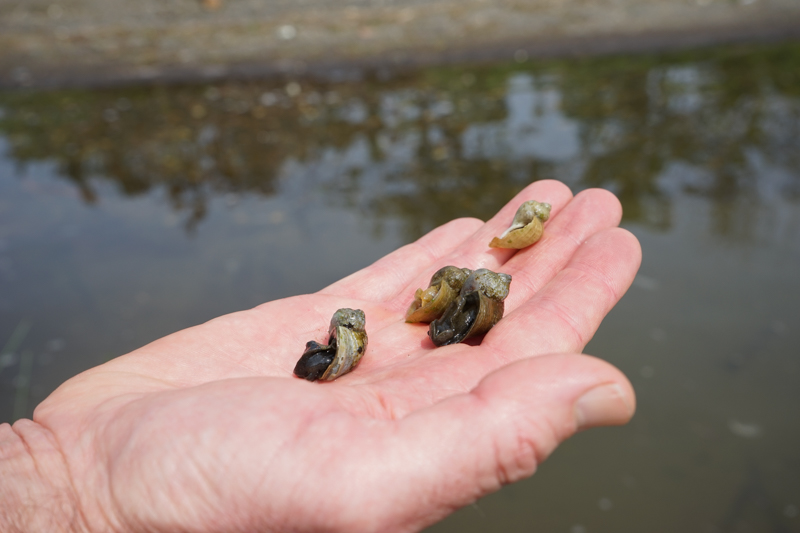
The Bigmouth Pondsnail is a large and charismatic species as snails go.
We also collected some specimens for geneticist Judith Roe at the University of Maine Presque Isle. She will help us explore shell and habitat variety in these pondsnails, and find out how they are related to pondsnails in other places.
We also kept an eye out for the Chinese Mystery Snail (Bellamya chinensis), an invader that is present in many southern Maine lakes. This large snail reaches high densities in some lakes, though there is not much science on its impacts to native snails or other wildlife.
Like many science projects, this one relied on many people, especially our summer field team of Alice Hotopp and Emma Donohoe. Alice and Emma were Colby College biology major students with a big interest in wildlife and the outdoors. We also had support and help searching from the Maine Dept. of Inland Fisheries and Wildlife’s biologist Derek Yorks, our friends Sally and David Bartlett, who have helped us to explore Square Lake, and other folks.
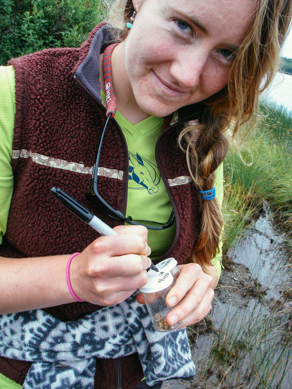
Alice Hotopp and Emma Donohoe explored wild lakeshores and helped to process the snails we collected.
Methods
Alice, Emma, and I visited a few waterbodies where there are old records of Bigmouth Pondsnails and other similar lakes that had never been explored for freshwater snails. The support of our backers was vital in covering travel expenses and work time for Alice and Emma.
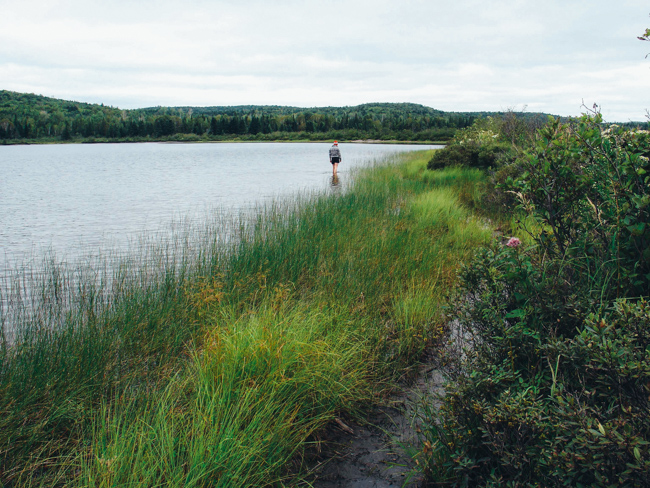
Alice searching the lakeshore.
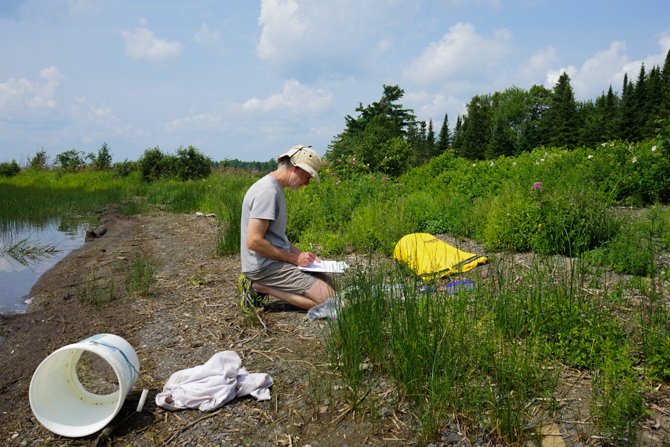
Taking detailed habitat notes was vital.
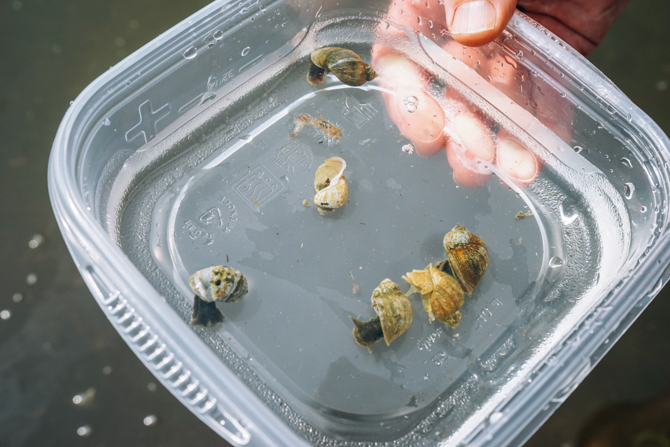
Live Bigmouth Pondsnails!
At each lake we visited the major habitat types where the Bigmouth Pondsnail may be found - stream inlets and outlets, cobble shores and especially sand beaches with sparse stands of rushes. We collected samples of all the land snail species we could find and took detailed notes on the habitats.
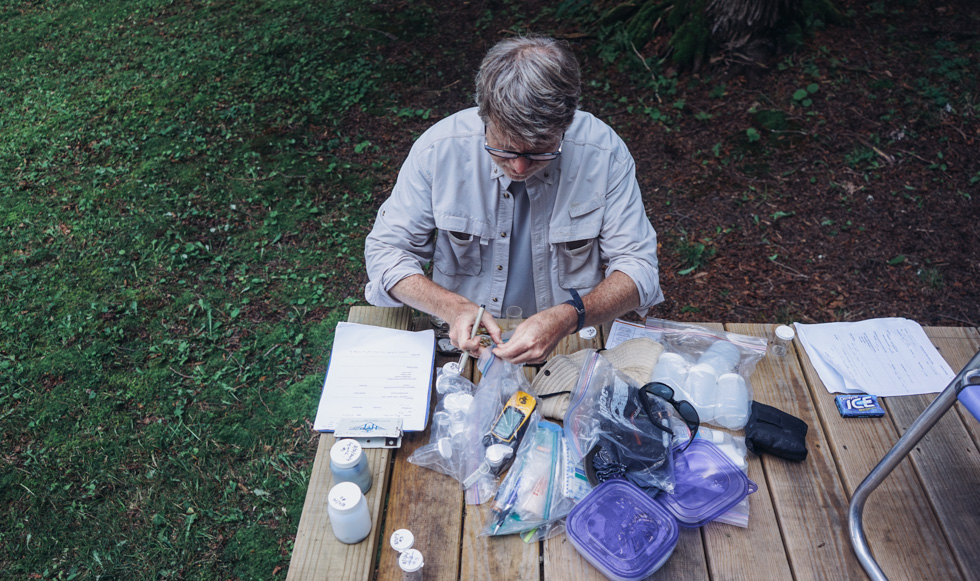
We picked our sampling sites using aerial photos on Google Earth, then paddled canoes and waded shorelines to reach them. While visiting lakes is usually scenic and fun, there are always a few long rainy days, blood-sucking leeches, and long drives on rough roads.
Afterward we identified and labeled all of our specimens - most will be deposited at the Carnegie Museum of Natural History in Pittsburgh, PA. We also gathered more information about our lakes from the invaluable Lakes of Maine website (http://www.lakesofmaine.org/) and Google Earth.
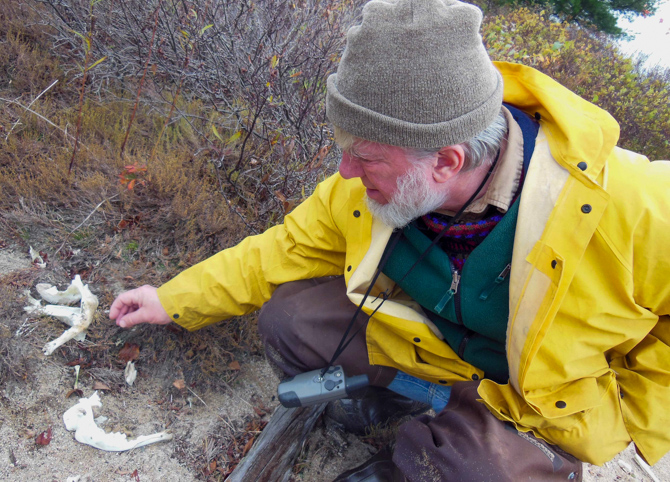
Naturalist Jim Chandler helped me check the shoreline of Millinocket Lake
Results
From our fieldwork we discovered another lake with Bigmouth Pondsnails! They were at Millinocket Lake, which is in the north-central part of the state, just southeast of Baxter State Park, and is connected to the West Branch of the Penobscot River.
Over the two summers we searched a total of 17 lakes and one river section (one where our pondsnail was already known to live, and two where a different pondsnail lives), and racked up more than 1,200 miles, much of it on gravel logging roads.
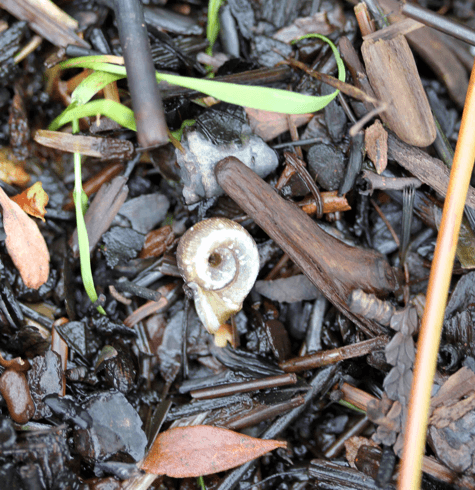
Helisoma anceps was the most commonly discovered snail on the lakes surveyed.
Here are the waterbodies we sampled: Attean Pond, Brassua Lake, Chemquasabamticook Lake, Haymock Lake, Lake George, Lobster Lake, Long Pond (on the Moose River), Millinocket lake, Portage Lake, Pushaw Lake, St. Froid Lake, Sebago Lake, Sebec Lake, Second Musquacook Lake, Square Lake, Stillwater (Penobscot) River, Swan Lake, and Wood Pond (for folks who have not been to Maine, the “ponds” are often hundreds of acres in size).
We found a total of 17 different types of freshwater snails at these places. We picked up more than 500 specimens (mostly shells), though in many spots we had to stop collecting the common shells or we’d still be out there.
Our snail sampling targeted habitats where we might find the Bigmouth Pondsnail, so we did not explore all of the various aquatic habitats. With that in mind, we found that Helisoma anceps was the most widespread snail. Its shell has a flattened shape - it is a type of ramshorn snail (Family: Planorbidae). We also found that the most interesting waterbodies in terms of species richness (again, in the habitats we searched) were Pushaw Lake and the Stillwater River near Orono.
Our laboratory analysis did not reveal any obvious associations between the presence of Bigmouth Pondsnails and certain other snails, or with water chemistry (such as dissolved oxygen or pH). We did not find the invading Chinese Mystery Snail at any lakes we searched.
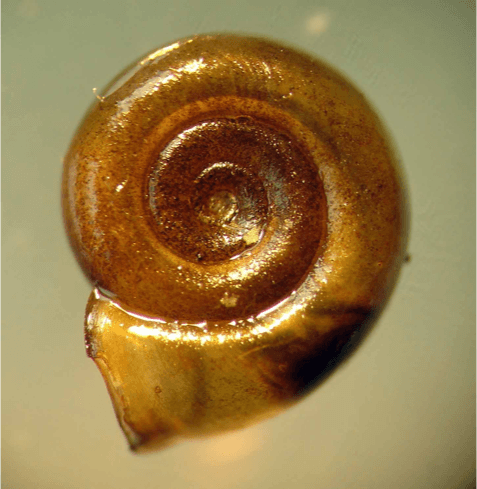
Valvata tricarinata (about 5mm wide), which is supposed to be a deep water lake snail. Found along the Stillwater River near Orono, Maine.
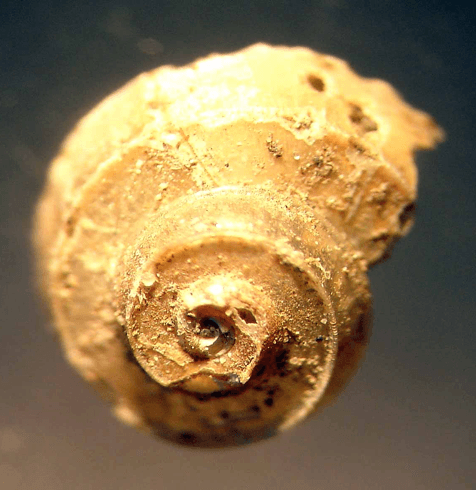
Planorbula armigera (~15mm) found at Pushaw Lake in Maine.
We did find that all of the lakes where the Bigmouth Pondsnails occur are larger than 2,500 acres, and that the number of houses and camps near pondsnail sites are fewer than three buildings per mile of shoreline. The favorite habitat of Bigmouth Pondsnails continues to be large lakeshore sandbars and beaches, often associated with stream mouths.
Our findings were used to help Maine with parts of their Wildlife Action Plan, and are the basis of our continuing freshwater snail research.
Conclusion
So, we found another lake with Bigmouth Pondsnails, and it showed that we are on the right track looking at large lakes with sandy lakeshores and little development. We also discovered many lakes where the snails don’t occur, and this hard-won “negative” data is also very useful in assessing the conservation needs of our snail.
We were also able to determine that non-native invasive snails, especially Cipangaludina chinensis, are absent from the remote lakes we searched. Keeping boats and gear free of any vegetation or animals as you are leaving a lake will help to keep these non-natives from spreading.
We also collected specimens for snail genetics work by Dr Judy Roe at UMPI. The genetics of pondsnails will help us understand why they and other snails vary in size and shape.
People in Maine love their lakes and wildlife. Going forward, we will be able to use our findings to help protect the lakes and lakeshores where the Bigmouth Pondsnail lives, already underway in one form through Maine’s Wildlife Action Plan.
We’ll also keep learning more about the Bigmouth Pondsnail. We can use our results here to pick more lakes to search. With more data we might be able to answer bigger questions as well, such as why this snail is not more common, and how it fits into the larger lake ecosystem.
 Kenneth P Hotopp1
Kenneth P Hotopp1 Judith Roe2
Judith Roe2
